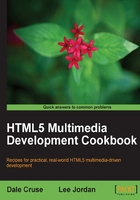
Introduction
"On the web, a man should not be judged by the color of his skin but by the content of his content." - Internet meme
One of the most significant differences between HTML5 and all previous versions of HTML is that before we built generic <div>s and other such generic containers without much knowledge of what content would go in them. With the advent of HTML5, that comes to an end. To be correct according to the specification semantically, we need to know what the content is so we can wrap it with the most appropriate new element tag. While this may mean we developers have to think differently, a new challenge is exactly why we're here. In this chapter we'll look at some examples of how to do just that using several of HTML5's new elements.
"In case of conflict, consider users over authors over implementers over specifiers over theoretical purity." - Priority of Constituencies
Throughout this chapter, we'll show you how to use the new <article> element to mark up both blog posts and comments, add a meaningful publication date to an <article>, use the new <mark> element to highlight text, and how to note visual elements using the new <figure> element. We'll then turn our attention to some new methods of styling text with font replacement techniques, as well as adding drop shadows and gradients to our text.